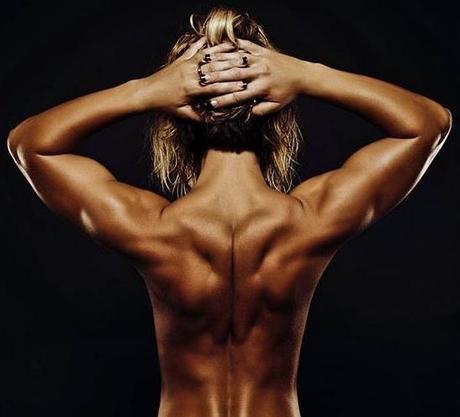Upper Back Exercises - What Most People Are Doing Wrong

The upper back region consists of the lats, the middle and lower traps and the rhomboids. In attempts to target these muscles, most people perform all kinds upper back exercises such as rowing movements and pull-up and pull-down exercises. This is exactly what they should be doing; however, as they execute the upper back exercises, they're neglecting an important technique that will optimize the contraction of the targeted muscles.
As people perform rowing movements (perhaps the most popular of the upper back exercises), they tend to just whip the weight back without really focusing on the technique. This sloppy technique only makes it difficult to target the muscles that you're trying to isolate. Rather then just throwing the weight back, you should take your time, focus on feeling the muscle contraction and you should initiate the movement with what's known as a scapular retraction.
Essentially, retracting the scapula simply refers to drawing your shoulder blades together. By initiating your rowing movements with a scapula retraction, what you'll be doing is isolating the muscles of the upper back while minimizing the recruitment of the biceps. You see, when people simply jerk the weight around while performing upper back exercises, the biceps are heavily involved as they work to flex the arm.
You'll want to initiate all your upper back exercises with either a scapula retraction (rowing movements) or a scapula depression (pull-down movements). Without seeing images or video of the upper back exercises, you may have a hard time picturing the movement. Envision the dumbbell row exercise. You'd basically want to draw the dumbbell up as high as you can while keeping your arm straight. Realistically, this is only around 4-6 inches or so. Once you've brought the weight up as high as you can while keeping your arm straight, you would then flex your arm and bring it up towards your ribcage or hip (depending on what variation you're performing).
For upper back exercises such as pull-downs, the same concept applies. The only difference is rather then drawing the scapula back, you'd draw it downwards. To simplify, envision someone performing pull-downs. To properly perform this "shoulder depression" technique, they would initiate the movement by drawing the shoulders downwards while keeping the arms straight. Once they've gone as far down as they can (usually a couple inches), they would then flex the arms and draw the pull-down bar down towards their chin/chest area.
Simply applying these techniques to your upper back exercises will make a world of difference. You may find it awkward at first but after a couple workouts, you'll get used to it and will just become second nature.
Source

